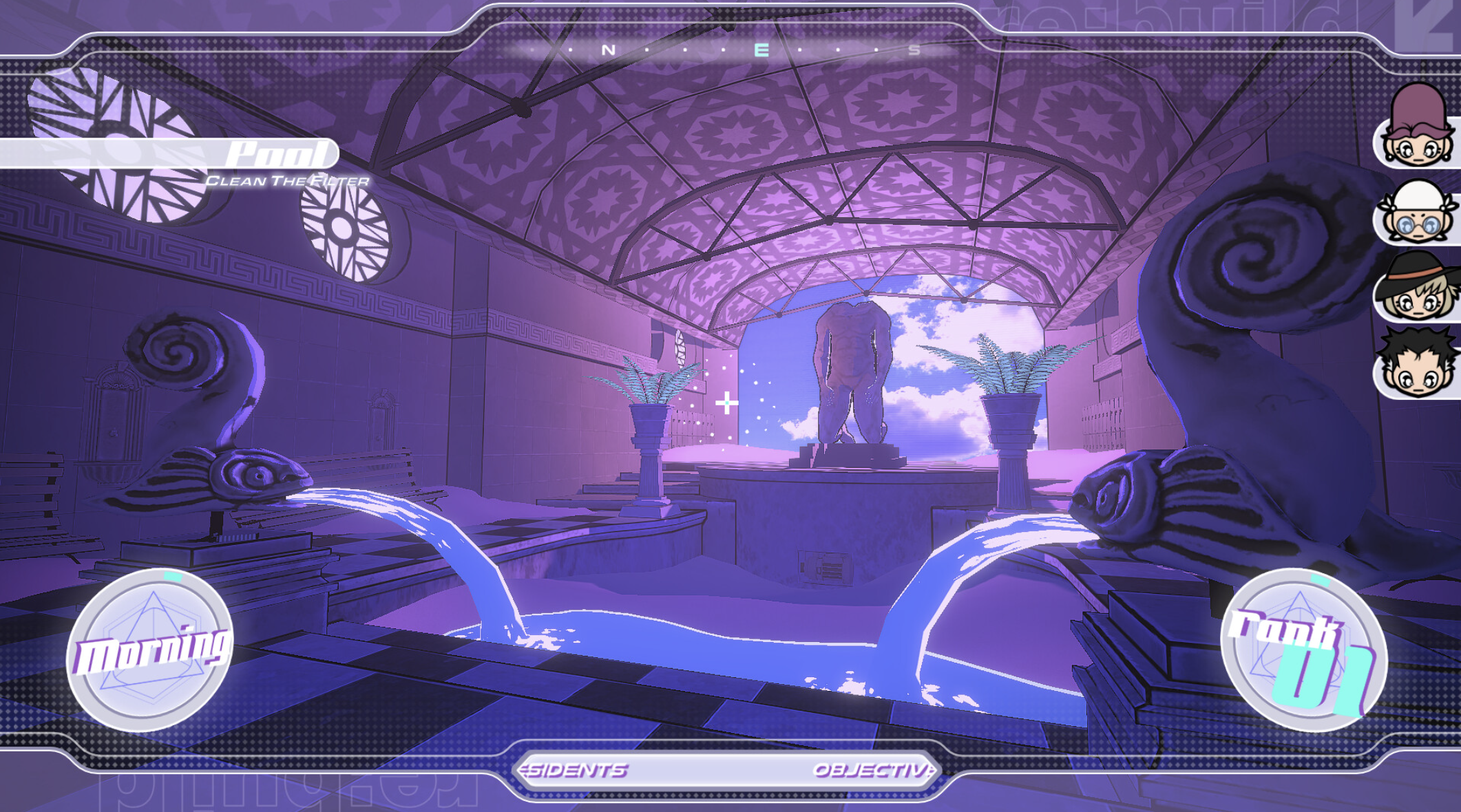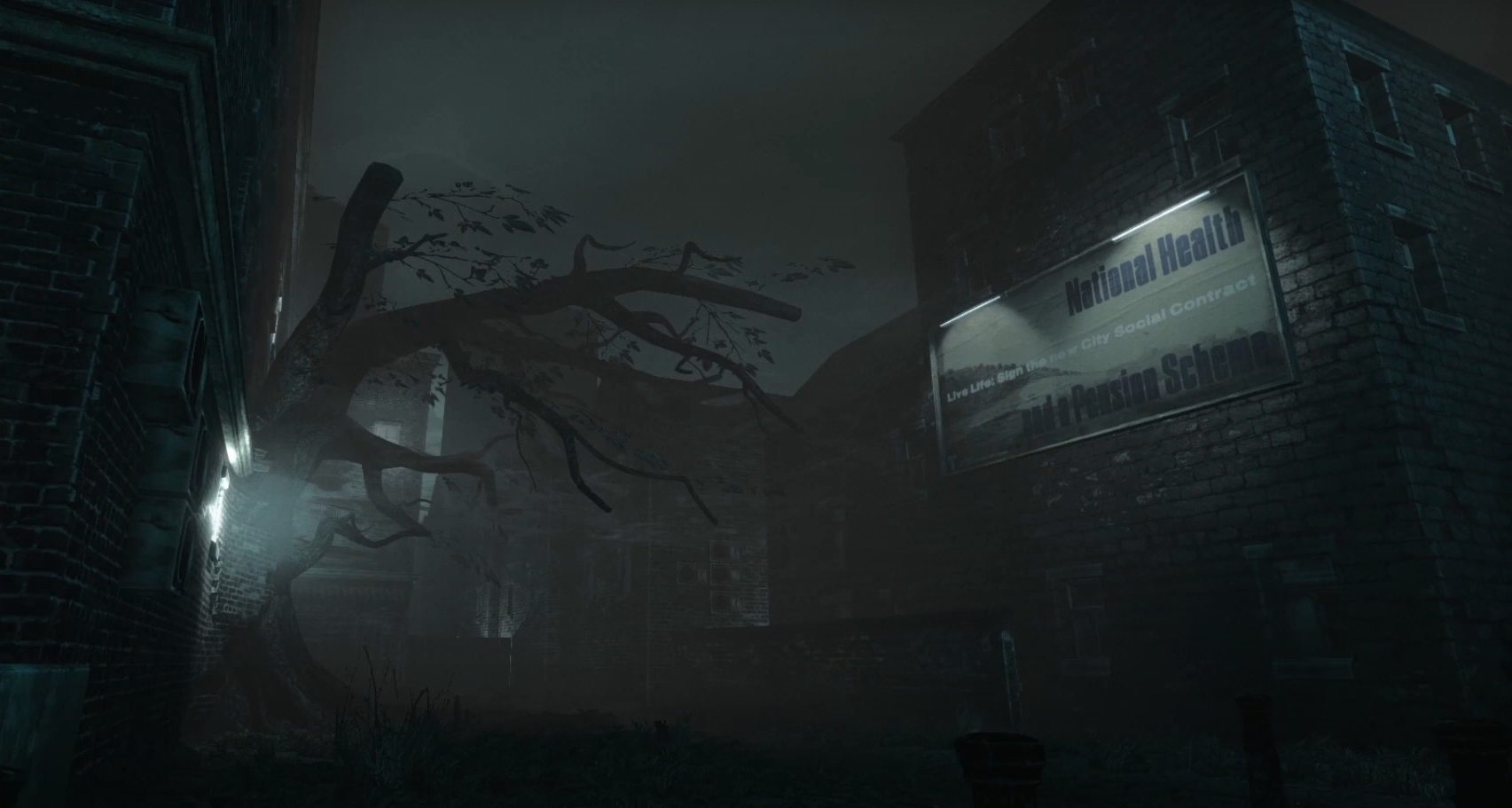Overview
Arbitrary Metric
March 2020 - September 2021
Arbitrary Metric was my first professional job, who shortly before I joined the studio had shipped their cult-indie-horror classic Paratopic. While there I built up my skillset as a level designer with a very small and tight group of incredibly talented folks as we developed two major projects: Tangiers and Roman Sands RE: Build. Both of these projects put an emphasis on experimental design— requiring me to apply my knowledge of level design holistically, not just focusing on ‘fun’ and ‘cool’, but supporting ambitious and specific narrative and art direction. The end result left me with a deeper understanding of how level design can not just be used to create interesting gameplay encounters, but support themes, motifs and implied or emergent narrative.
At GDC in 2022, I was invited to a round-table during the level design summit to discuss my time working on Tangiers as well as discuss level design in the general context of independently made immersive sims in a session entitled Torchbearers: A New Generation of Immersive Sim Developers
The roundtable was organized by Dana Nightingale, moderated by Harvey Smith and included: Dillon Rogers, Suzzanne Will and Snaketicis
Tangiers
Status: In Development. Unfortunately, extended gameplay is not viewable.
Roles: Level Design and Systems Design
Tangiers is a stealth-horror immersive sim set in a dying city.
My role on this project was that of a traditional level designer, with some systems design work sprinkled in. My core responsibilities included layout and encounter design with a strong emphasis on architectural and spatial credibility. We often references real world locations for our missions, and thus had to follow the core principals of urban design. In my time there, along with outlining some of the core campaign structure, I spent most of my time prototyping an early portion of our game which included a core mission location (an Church undergoing a Brutalist renovation) as well as a large urban section leading to the mission location.
These trailers tease some of the environments and audio design.
My Process
Conceptualize: What is the emotive journey of this level?
Research: What places are we drawing from?
Elaborate: What was the history of this space? Who made it, and what for? How has it changed?
Planning: Document. Present. Discuss.
Blockmesh: Create. Playtest. Iterate.
floor plan for a small infiltration segment
a early-flythrough of merseyside landing
zoning map for explorable district
Merchant Residential Zone (as referenced above)
a video showing off our punch-card locks
System Design
Along with level design, I also contributed to Tangiers’ systems design. The following is a feature of mine which I both designed and helped program.
The Punch Card Lock is broken up into three systems: the lock itself, the punch-cards and the card-puncher.
Since each component is independent, we are able to modify the system in new ways each instance. Maybe a punch-card is missing and a player must find or spend one? Maybe the card-puncher is damaged, locked away or guarded? From this one system we gain the opportunity for creating engaging puzzles, stealth encounters and player driven objectives.
Tools
We use a custom toolsets to rig and handle
Level Scripting
AI Patrol Paths
Systemic Interaction Between Objects
Quest System
Dialogue System
a short video showing off our systemic interaction
in editor view
entity configuration panel
Roman Sands RE: Build
Status: In Development. Demo released on Steam
Responsibilities: Level Design and Systems Design
Roman Sands is a first person visual-novel set in a resort outside of time.
My work on this project was mainly to prop up the first prototype, laying out most of the core beats and puzzles of the first act of the game as well as doing the first pass of architecture for all locations scoped at that time. It was a blend of puzzle design, level design, narrative design and systems design— many parts of which have made it into the demo and beyond to the eventual release.






















